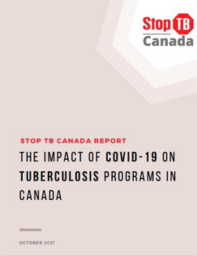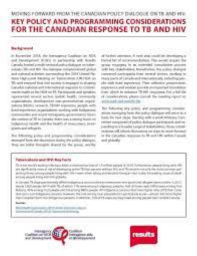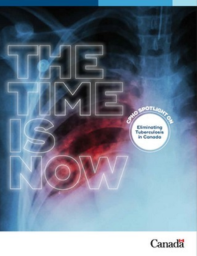Access to Essential Tuberculosis Medicines in Canada
Stop TB Canada’s latest report reveals alarming gaps in access to essential tuberculosis (TB) medicines across the country, raising urgent concerns about Canada’s capacity to effectively combat this preventable and treatable disease. The report, Access to Essential Tuberculosis Medicines in Canada, presents the findings of a national survey involving 71 healthcare providers and highlights major obstacles that are preventing timely treatment for people with TB.
The Canadian TB Standards, 8th Edition
The last 8 years have witnessed great strides in our understanding of the pathogenesis, immunology and epidemiology of tuberculosis. In the past decade, after too many decades of inaction, new diagnostics and new treatment regimens for tuberculosis (TB) infection, and drug-resistant TB disease have been developed. This 8th edition of the Canadian Tuberculosis Standards (the Standards) has been extensively revised to incorporate much of this new information, building upon the 7 previous versions of the Standards, which were published in 1972 (with a pediatric supplement in 1974), 1981, 1988, 1996, 2000, 2007 and 2013.
The Impact of COVID-19 on Tuberculosis Programs in Canada
This report is the culmination of a series of surveys conducted by the Stop TB Canada network to assess how TB programs in Canada have been impacted by COVID-19.
The findings of this initiative are devastating - but not surprising given the impact that COVID-19 has had on health systems globally. Respondents of our survey reported diagnostic delays and individuals presenting with more advanced disease, large-scale diversions of TB staff to COVID-19 work, significant disruptions to active case finding, contact tracing and LTBI management, and declines in quality of TB care during the COVID-19 pandemic. These findings suggest alarming setbacks for efforts to end TB in Canada.
Key Policy and Programming Considerations for the Canadian Response to TB and HIV
This resource is the result of multi-sectoral policy dialogue on TB and HIV which brought together participants from several sectors, working in many parts of Canada and internationally, including people with lived experience and those most affected in Canada, namely Indigenous and newcomers.
The resource outlines 12 key policy and programming considerations to inform discussion on ways to move forward in the Canadian response to TB and HIV within Canada and globally. Each consideration is accompanied by potential actions to serve as next steps.
A Guide for Canadian Community Organizations Involved in the Response to TB and HIV
With TB being the number one killer of people living with HIV, the two diseases are closely linked. This guide calls on the TB and HIV communities to join forces for a collaborative response. In order to see real success, governments must commit the resources and policies necessary to drive implementation in their countries at national, regional, and local levels to reach the targets laid out in the Political Declaration.
This guide presents a breakdown of the Political Declaration for a Canadian audience, which includes those working to end TB within Canada and around the world. This document is the next step in our fight against TB. It is intended to be used by community members, practitioners, civil servants, civil society, and others as a guide for Canada to push for accountability in the implementation of the Political Declaration.
Inuit TB Elimination Framework
The Inuit Tuberculosis Elimination Framework was released by Inuit Tapiriit Kanatami as a next step in ongoing efforts to address staggeringly high rates of TB among Inuit living in Inuit Nunangat.
While Canada has come a long way toward reaching TB elimination with the advent of antibiotics and overall improvement in socio-economic conditions, progress has plateaued since the 1980s.
The Story of a National Crime: Being an Appeal for Justice to the Indians of Canada
"The Story of a National Crime: Being an Appeal for Justice to the Indians of Canada" is a 1922 report by Dr. Peter Henderson Bryce, Chief Medical Officer of the Department of Indian Affairs. In this report, he gives an account of the deplorable conditions in Canadian Residential Schools, as well as underlining the government's continued failure to act to improve these conditions, despite his urgent calls to action dating as far back as 1907, when he first relayed to the government the disturbing results of his observations from numerous schools across Canada.







